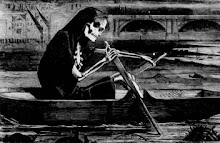After Mono Lake we had one more major place to go on the trip: Bodie. I already touched on this location here but thought I'd anyway post another picture now just to show another side of the place.
In addition to the abandoned houses, sheds and varied bits of machinery, a few of the original buildings still have the (presumably) original contents laid out inside. Until fairly recently, Bodie was less well managed than it is now, with the park being open at all hours and with little in the way of restrictions or park management. It was possible to get into places like the hotel and mortuary to photograph and explore, seemingly without much in the way of restrictions. Alas, a situation that holds no more. In order to do the best they can to preserve the essence of the place, access is now much more controlled meaning that you can only peer through the dusty windows in order to see what's inside. (Actually, I think that's a good thing. This place really does deserve to be preserved "as is" without visitors constantly disturbing the interiors of lay buildings, or worse taking things away as souveniers.)
Of the places shown with contents in place, the mortuary to me was the most interesting, conveying best the harshness of the place and most especially the endless mini-tragedies that must have accompanied a mining community high up in the Sierras at the end of the 19th century. It's worth remembering that Bodie is over 8,000 feet above sea level; it's barren, dry and a most unforgiving location at all times of the year. How bad can it get? According to this source, in January, 1880, temperatures fell to -26 degrees F and mules froze to death trying to get additional supplies of wood for heating into the settlement. And trust me, the houses I saw were absolutely no protection at all from those extremes, firewood supplies or not, so it's hard today to imagine just how hard life must have been for the early pioneers and gold miners.
Shown here is a child's coffin leaning against a wall, seemingly ready for an occupant who never ultimately arrived. We don't know why it's there - indeed, we have no real idea if it was ever part of the layout of that room in the first place - but it does make a powerful statement I think.


No comments:
Post a Comment